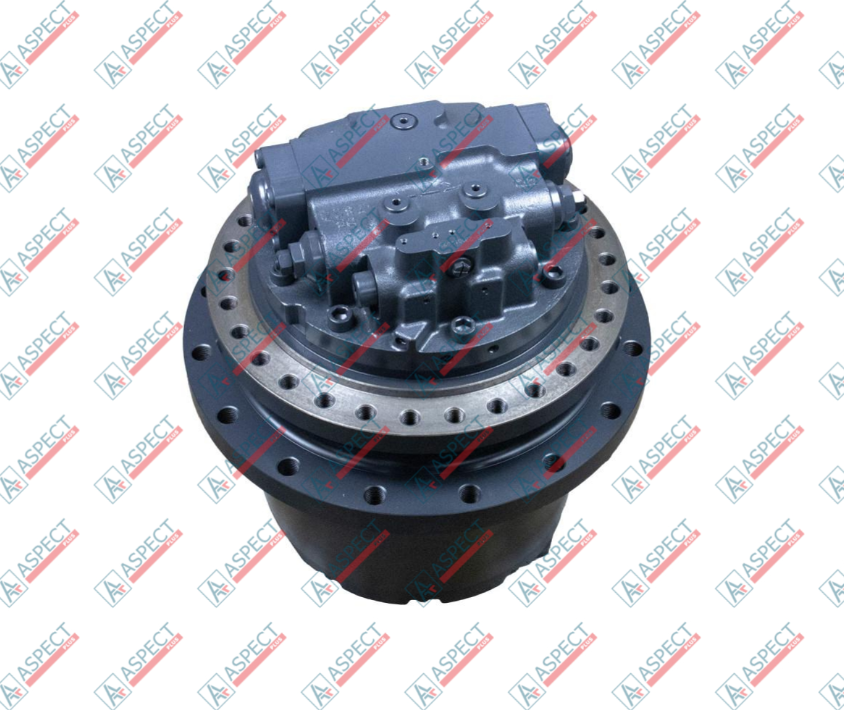The backhoe loader is a cornerstone of modern construction equipment, valued for its ability to perform both loading and digging tasks. At the heart of its versatility and power is the transmission, a complex system responsible for transferring engine power to the wheels and hydraulics. For owners and operators of JCB backhoe loaders, a machine renowned for its durability and performance, the JCB transmission is a critical component that requires diligent care. Neglecting it can lead to costly repairs and significant downtime. This article will focus on the crucial importance of preventive maintenance heavy equipment and provide practical, actionable advice on how to avoid common JCB transmission failures through regular inspections, proper fluid management, and the timely replacement of worn components. The goal is to help extend the lifespan of JCB transmissions and ensure the consistent, reliable performance of your machine.
The Vital Role of the JCB Transmission in a Backhoe Loader

The transmission is the nerve center of a JCB backhoe loader's drivetrain. Its primary functions include:
-
Power Transfer: It efficiently transfers the power generated by the engine to the drive wheels, enabling the machine to move.
-
Speed and Direction Control: It allows the operator to select different speeds and change direction (forward and reverse).
-
Torque Multiplication: It multiplies engine torque to provide the necessary force for demanding tasks like pushing and climbing.
Given the constant shifting between forward and reverse, and the heavy loads encountered in construction and agricultural work, the JCB transmission is subjected to immense stress.
Common Causes of JCB Transmission Failures
Understanding the root causes of failure is the first step toward effective preventive maintenance. For JCB transmissions, the most common culprits are:
-
Overheating: Excessive heat is the number one enemy of any transmission. It breaks down the JCB transmission fluid, compromising its lubricating properties and causing internal components to wear prematurely.
-
Fluid Contamination: A transmission relies on clean fluid to lubricate, cool, and transfer hydraulic power. Contaminants such as metal shavings, dirt, or water can damage seals, bearings, and clutch plates.
-
Neglected Maintenance: Ignoring the JCB service schedule for fluid and filter changes is a surefire way to shorten a transmission's life. Old, dirty fluid is the leading cause of internal wear.
-
Improper Operation: Operator habits like abrupt shifting between forward and reverse or constant "riding" the transmission can place undue stress on clutches and gears.
-
Worn Components: Over time, parts like friction plates, gears, and bearings will wear out. If not replaced in time, they can cause a cascade of failures.
Key Aspects of Preventive Maintenance for a JCB Transmission
A proactive approach to backhoe loader transmission maintenance is essential for safeguarding your investment.
1. Fluid and Filter Management:
-
Check Fluid Level and Quality: Regularly check the JCB transmission fluid level and quality. The fluid should be at the correct level, free from bubbles, and have a clear, reddish-brown color (depending on the type). Any signs of burning smell or dark color indicate a problem.
-
Adhere to the Replacement Schedule: Follow the JCB service schedule for fluid and filter changes. This is the single most important step in protecting your transmission. A transmission filter replacement ensures that the system remains free of abrasive contaminants.
2. Temperature Monitoring and Control:
-
Monitor the Gauge: Pay close attention to the transmission temperature gauge. If it's consistently running hot, it could indicate a problem with the cooler, a low fluid level, or an underlying mechanical issue.
-
Avoid Overheating: Avoid prolonged periods of heavy towing or demanding work in high ambient temperatures to prevent transmission overheating.
3. Regular Inspections and Diagnostics:
-
Visual Check: Routinely inspect the transmission and its connections for any signs of fluid leaks. Also, check the cooler lines and fittings for damage.
-
Listen for Abnormal Sounds: Unusual noises like grinding, clunking, or whining can be early warnings of a problem. Investigate them immediately.
-
Clutch Adjustment: For mechanical systems, ensure the clutch adjustment JCB is correct to prevent slipping and excessive wear.
The Importance of Quality Parts for Transmission Repair
When a JCB transmission needs a repair, the choice of parts is paramount. Using substandard parts can compromise the entire system, leading to a repeat failure and greater expense.
-
Genuine Parts: Original JCB parts are manufactured to precise specifications, ensuring a perfect fit and material quality. Using them for transmission repair is the best way to restore the component to its original factory performance and reliability.
-
High-Quality Analogues: If a genuine part is not available, a high-quality aftermarket analogue from a reputable supplier can be a good alternative, but careful selection is key. Our company Aspect Plus offers a wide range of JCB parts transmission, including gears, bearings, friction plates, and seals, that meet stringent quality standards.

Conclusion
The preventive maintenance of a JCB transmission in backhoe loaders is a strategic and necessary practice for any owner or operator. By understanding the common causes of failure and adopting a proactive approach to fluid management, temperature control, and inspections, you can significantly extend the lifespan of your machine. The key to successful backhoe loader troubleshooting and repair lies in using quality parts, which act as a direct investment in the reliability and longevity of your heavy equipment.
For expert advice on JCB service schedules, professional repair services, and a reliable source for genuine JCB parts, contact the specialists at Aspect Plus. We are here to help you keep your JCB backhoe running smoothly and productively.
